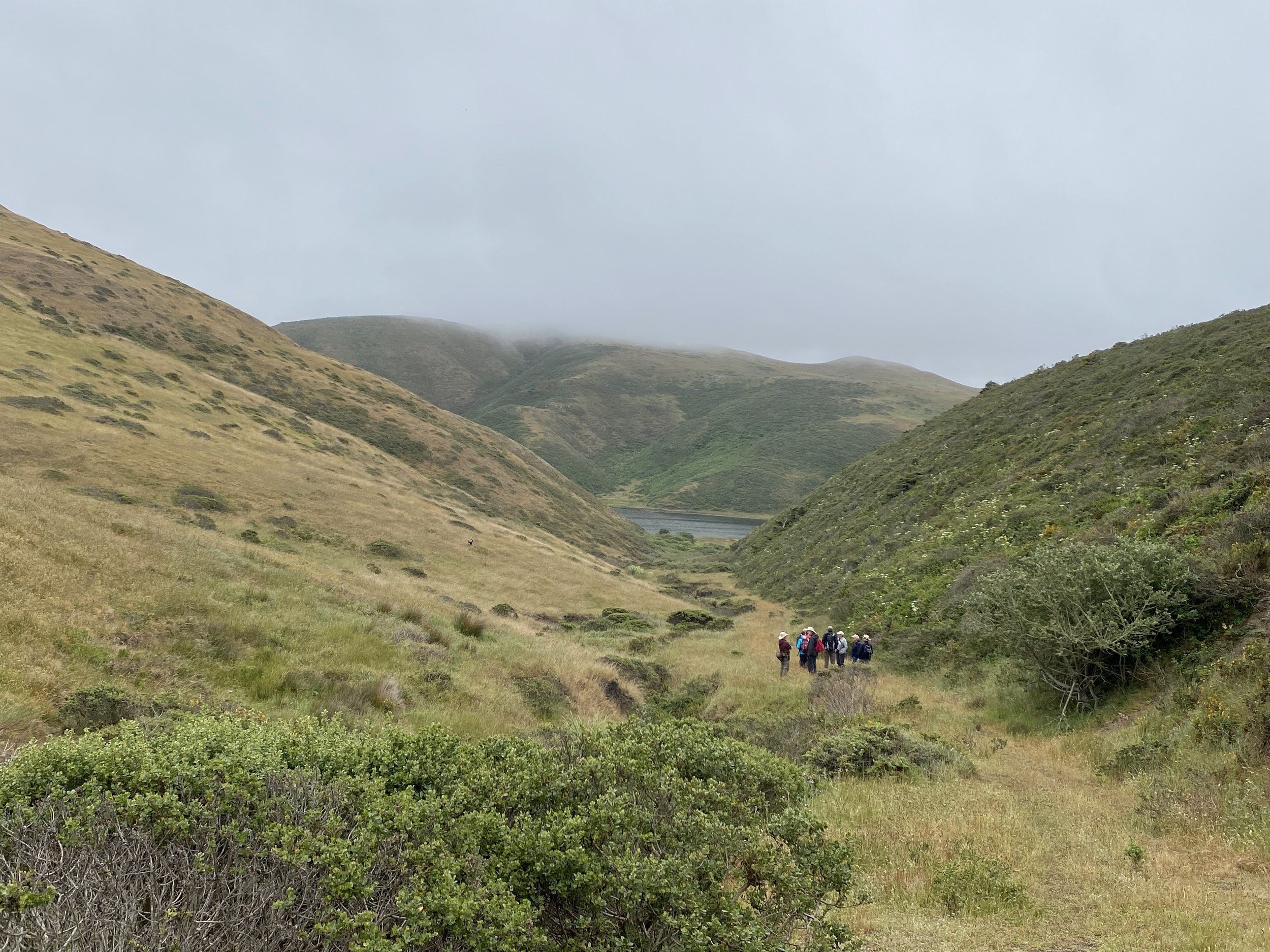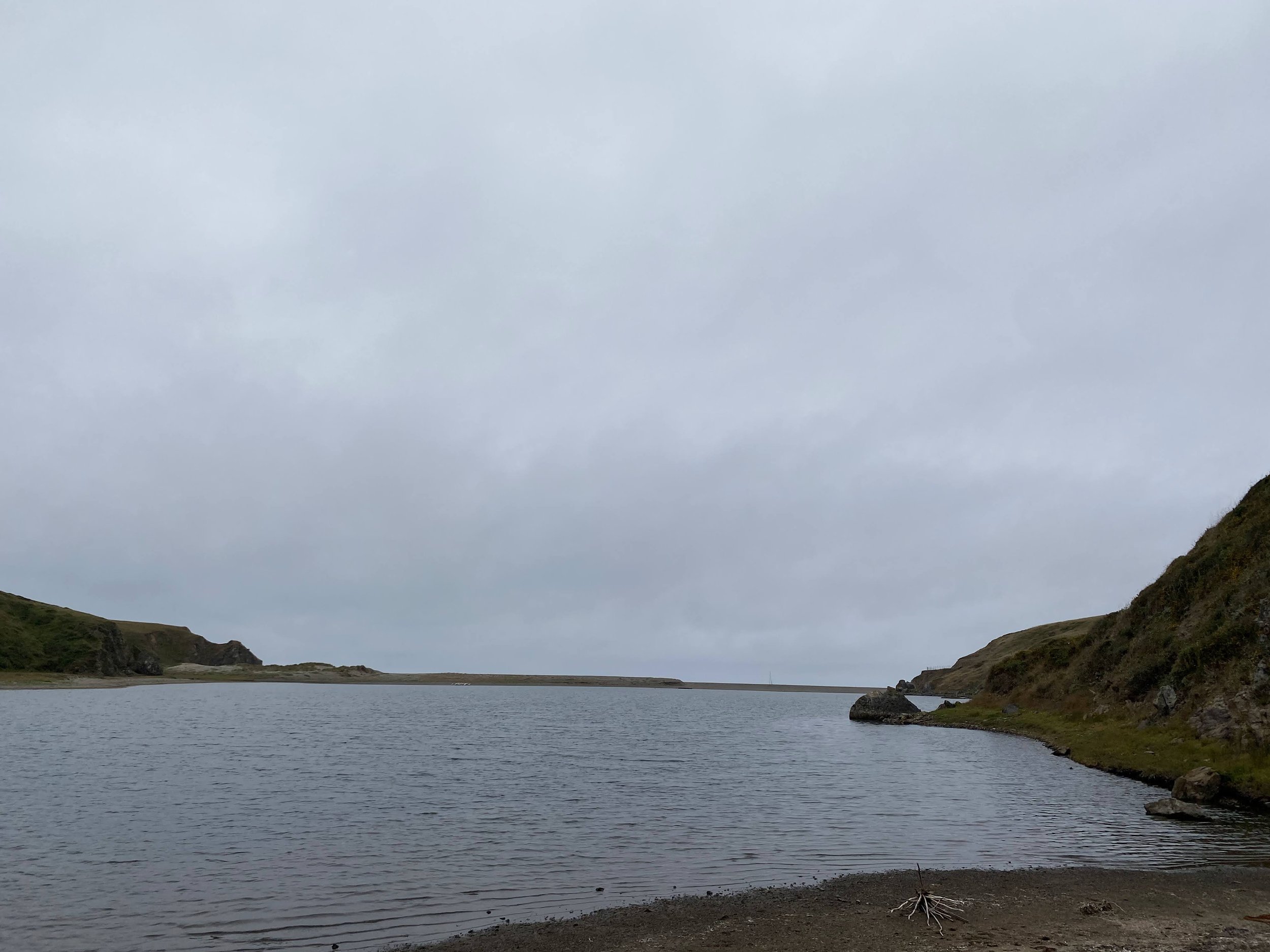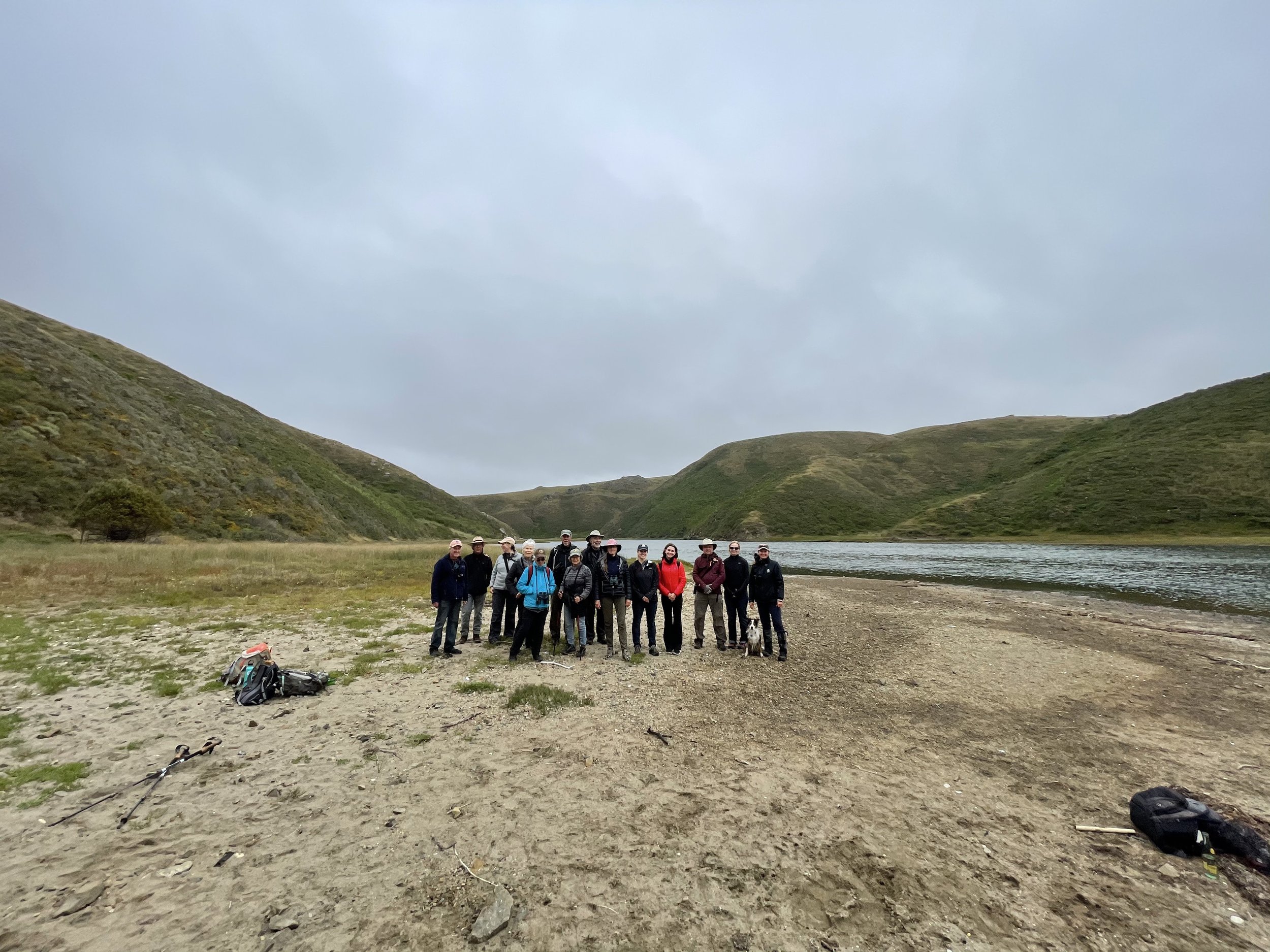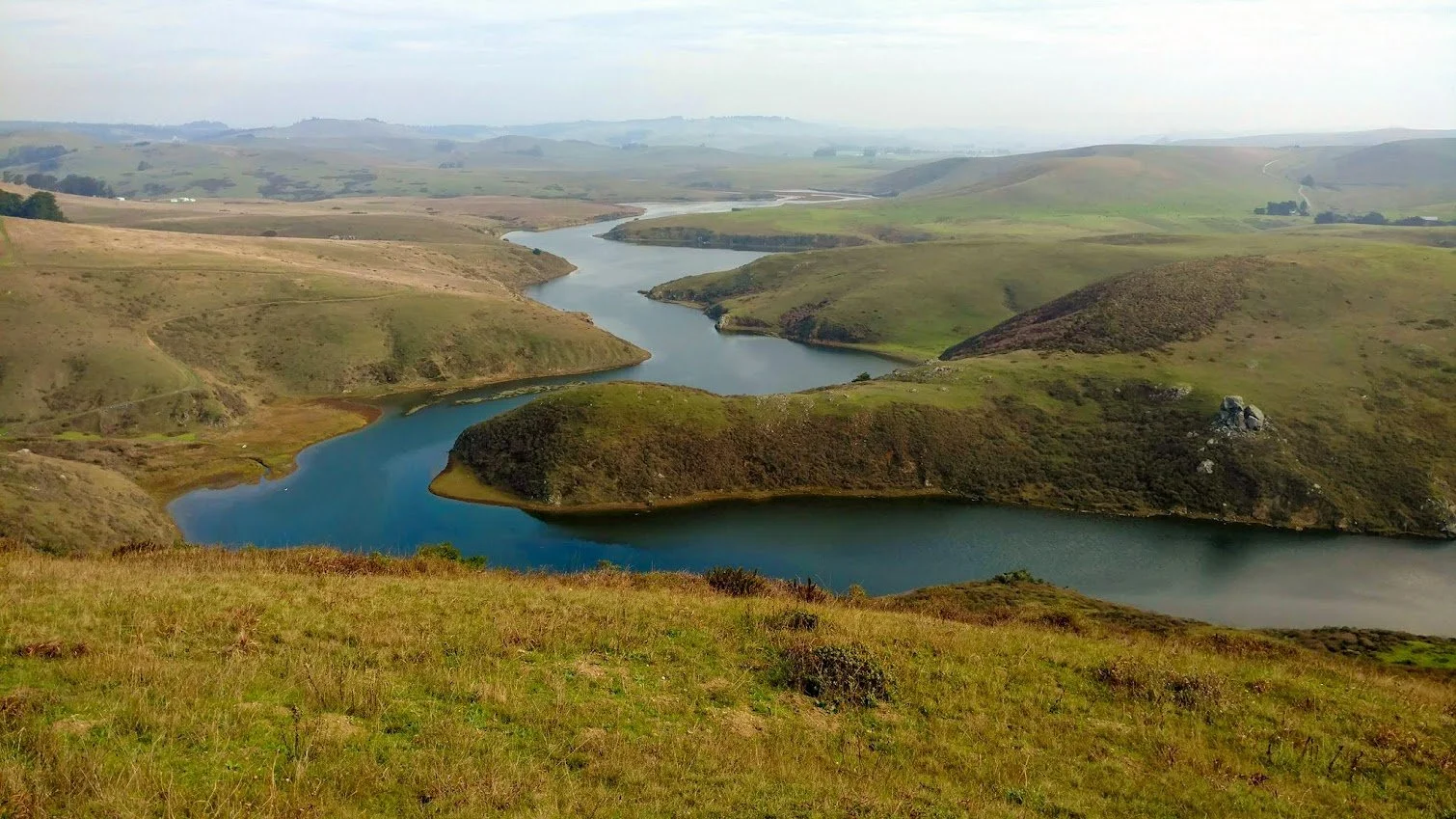Estero Americano, photograph courtesy of Wildlands Conservancy by John Trammell
-
Located just north of Tomales Bay, Estero Americano is unlike other wetlands along the Pacific coast. The fjord-like Estero Americano is home to significant populations of birds, fish, mammals, reptiles, and amphibians, including several special status and endangered species. Estero Americano is recognized as a Sensitive Coastal Resource Area, California State Marine Recreational Management Area, and part of the Greater Farallones National Marine Sanctuary.
Since 1988, The Environmental Action Committee of West Marin has worked tirelessly with our partners to protect and conserve Estero Americano from urban development and pollution. Today, despite enjoying protections as an important ecological reserve, the seasonal estuary remains under threat from urban encroachment and water degradation due to agricultural runoff and siltation. Work to preserve Estero Americano is never-ending and has never been more critical to the survival of the hundreds of species that depend on it.
-
This year marks 25 years since Estero Americano was saved from the threat of daily inundation of millions of gallons of treated sewage from the Cities of Santa Rosa, Rohnert Park, Sebastopol, and the South Park Sanitary District and 51 years since EAC was founded to protect the lands, waters, and biodiversity of West Marin.
While the Estero has been saved from the plans to dump wastewater into its upper watershed, there is still more work to be done. For more than 150 years, the Esteros Watershed has endured changes in the landscape with the introduction of agricultural land use activities that have resulted in increased rates of chemical runoff (e.g.,. excess nitrogen), bacteria from livestock, erosion and sedimentation, that has changed the hydrology, depth of Estero Creek, and reduced the total tidal marsh habitat available. Dynamite was used nearby to open the mouth of an adjacent estuary when the bulldozers proved inadequate.
Today, the Estero has been afforded multiple layers of protection, including being part of the Greater Farallones National Marine Sanctuary, and in 1999, the State of California recognized the need to safeguard the long-term health of California's marine life with the passage of the Marine Life Protection Act (MLPA). The MLPA aims to protect California’s marine natural heritage through establishing a statewide network of marine protected areas (MPAs) designed, created, and managed using science and stakeholder input.
MPAs protect the diversity and abundance of marine life, the habitats they depend on, and the integrity of marine ecosystems. Following robust community and stakeholder engagement throughout the state, a network of 124 Marine Protected Areas (MPAs) were created. In 2010, Americano Estero was included into the network as a State Marine Recreational Management Area, prohibiting collection and take of marine species with an exception for licensed and permitted waterfowl hunting.
-
There is still work ahead to maintain the health and vitality of the area to improve water quality, and restore and regenerate overall conditions of the area’s soil, water, grassland, and riparian resources in the Estero Americano watershed.
The MPA designation of the Estero should be stronger, and there are opportunities to develop comprehensive water quality standards for the watershed, which would result in improvements in the overall health and productivity of the entire Estero Watershed. This work may be accomplished by focusing on industrial and agricultural best management practices that include continuous water quality monitoring; restoring aquatic, riparian and terrestrial habitats; limiting consumptive activities; and improving native species diversity and richness.
Places like Estero Americano are not guaranteed to be protected forever. Preserving the wild spaces we love does not happen overnight, rather it falls to multiple generations of people to conserve the places that preserve us all.
We are all beneficiaries of the profound gifts the natural world has bestowed upon us and are the current keepers of the natural world, empowered to carry the wild legacy forward for future generations. EAC is dedicated to protecting special places like Estero Americano now and into the future.
“Each layer of protection is only as good as the people who watch over it.” - Richard Charter, Friends of the Estero
2022 Field Trip to Estero Americano
“It takes the public to save a place.” - Richard Charter, Friends of the Esteros
It’s late May on a foggy and overcast morning, and a group of staff and supporters of the Environmental Action Committee of West Marin (EAC) arrive in the parking lot of the sleepy coastal town of Bodega’s famed Potter Schoolhouse–made famous as the backdrop of the 1963 Alfred Hitcock film, The Birds–for a special outing to Estero Americano.
The group met Jill, a ranger with the Wildlands Conservancy, for a private walk along the elusive Estero Americano estuary. The car caravanned from the sleepy town of Bodega, along gravel roads, and through gates to the 567-acre property that Wildlands Conservancy–in partnership with the State of California, regional land trusts, foundations, and agricultural districts–acquired in 2016. The land acquisition will ensure the long-term protection of the irreplaceable headlands of the Estero Americano. This outing was coordinated by EAC as the first walk of a series of organizational mission moments to honor EAC’s 50-years of environmental advocacy, outreach, and engagement in Coastal West Marin.
EAC and the Estero Americano have a storied past. It took more than a decade of advocacy and vigilance to ensure that the Estero–an exceedingly rare tidal estuary–and the surrounding area including mudflats, open brackish water, extensive marsh area, the 7.6 mile long Americano Creek, the upper Estero Americano Watershed, and all the species that depend on it as their primary tributary–did not succumb to pollution and development, as so many of our wetlands have over the years.
As the group disembarked and arranged themselves along the picnic tables, they commented to one another that the thick fog made it impossible to find their bearings, let alone figure out the direction of the Pacific Ocean or hear any soundscape. An important benefit though, the fog was much preferred to the usual strong springtime winds that blow on average at 9 miles per hour. One can see the force of the winds by looking at the sway of the trees growing at an angle against the hillsides.
Morgan Patton, the Executive Director of the EAC, welcomed the group and introduced special guest speaker, Richard Charter [1], a local West Sonoma County community member and well-known coastal champion who was happy to join the group to talk about the history of the work that went into protecting Estero Americano and the partnership between the Friends of the Estero and EAC.
“Americano Estero was saved because of people pushing back and community organizing. The Estero exists today because of people fighting for it, which is amazing because not everyone knows that it is even here.”
- Richard Charter, Friends of the Esteros Campaign
To everyone’s delight, Richard started his talk about the Estero linking back to the prehistoric natural history and mammoths. He emphasized the natural habitat values of the Estero and the surrounding hillsides as important for migrating birds; resident mammals; including a lot of badgers “like a city of badgers;” and special status and endangered plants and wildlife.
The fjord-like Estero Americano estuary lies along the Pacific Coast Flyway, just south of Bodega Bay, where diverse estuarine habitats nestle in the steeply sloping hillsides on the border of Sonoma and Marin counties. This exceedingly rare seasonal sandbar tidal-built estuary at the edge of the Greater Farallones National Marine Sanctuary was almost drowned. Migratory and resident shorebirds would have lost their foraging and breeding habitat. The tidewater goby and winter-run steelhead trout–two federally listed endangered species–would no longer have had their rearing habitat. Invertebrates wouldn't have been able to rely on the eelgrass beds at the estuary's mouth.
Richard recounted the Estero's conservation story really began most unusually in the early morning hours of February 1986 with an environmentalist who would later find West Sonoma County fame as, “Tom the Manure Man Lynch.” Lynch arrived in downtown Santa Rosa with a broadcast manure spreader and covered four downtown Santa Rosa city blocks with cow dung [2]. He was appalled by the City of Santa Rosa’s illegal dumping of 750 million gallons of raw sewage into the Russian River during heavy rains.
In response to Lynch’s advocacy, the City of Santa Rosa sought a new wastewater disposal solution–building a series of water treatment ponds to release wastewater directly into the relatively unknown water body, Estero Americano.
The City’s plan to release treated effluent into Estero Americano was a clear and present threat to both regional environmental and economic interests that rallied an improbable coalition of environmentalists, ranchers, aquaculturists, and community members who joined together as the Friends of the Esteros.
The Friends of the Esteros met frequently, a prime example of community collaboration where families gathered to discuss the problems and next steps while Richard’s son passed around homemade cookies. Richard recounted with a laugh, “people really came for the cookies.” As the Friends of the Esteros grew, they needed an official partner. Richard approached EAC for a fiscal sponsorship and to assist with financial oversight, outreach, and advocacy to build public and political support to protect the Estero.
“Without EAC, the Friends would not have been able to succeed as they needed an advocacy fiscal sponsor and there weren't any other groups who could have helped.”
- Richard Charter, Friends of the Esteros
Publicly, the City presented the project as an ecological benefit, absurdly stating that the effluent would enhance the wetlands adjacent to the Estero.
In response, the Friends of the Esteros and EAC rebutted and raised questions about Sonoma County’s projected growth rate, general planning for West Sonoma County, the potential impacts of the effluent on Tomales Bay, and the cumulative impacts of this type of irrigation on soil. EAC also argued, “the intrusion of the treated effluent into the normally brackish marshland within Estero Americano would alter the sensitive food chain of that ecosystem -- not to mention the water temperature, especially since the Estero has little to no fresh water feeding into during the summer months.”
EAC predicted the interdependent intertidal community of the Estero may be destroyed as the plants and animals adapted to high salinity would find their existence threatened by the flows of freshwater. In addition, the tidal currents would then carry the polluted water south, down the coast and into the aquatic environment of Tomales Bay that would also negatively impact the commercial fishing and oyster operations.
To combat the City’s plans, the Friends of the Estero and EAC created a broad public outreach campaign and raised almost $20,000 at a fundraising Oyster and Music Festival in Olema. These funds covered all the eventual litigation costs against the City, the Planning Council, and Board of Public Utilities.
More than ten years later, the lawsuit would succeed in stopping the City’s plans, as the Environmental Impact Statement was found defective for its failure to consider all potential impacts and provide appropriate mitigations. In 1997, the City formally abandoned their plans due to the public pushback, legal challenges, inability to acquire the lands to construct needed dams and treated water holding catchments, and the development of new filtration technologies that allowed for finer screening of sewage water prior to release into the Russian River.
As Richard finished his story, the fog lifted, revealing the backdrop of the Pacific Ocean and the soundscape of barking sea lions in the distance. The group smiled and Richard reminded the group that it takes the public to save a place and that as the late, great, Peter Douglas famously said, “the coast is never saved, it's always being saved.”















The field trip to Americano Estero is part of EAC’s mission moments celebrating EAC’s 50th Anniversary working to protect and sustain the unique lands, waters, and biodiversity of coastal West Marin. Additional field trips will be announced in the coming months to highlight six significant locations from EAC’s past, present work, and future. Thank you to all of our supporters who make our work possible every day.
References:
1. Richard Charter is currently a Senior fellow at The Ocean Foundation. He has dedicated his career to coastal protection, fighting offshore oil, and developing marine sanctuaries.
2. Clean Water Crusader Leaves Roses Here, Healdsburg Tribune, Enterprise and Scimitar, Number 29, 7 February 1986. Available with archive search at www.cdnc.ucr.edu/





